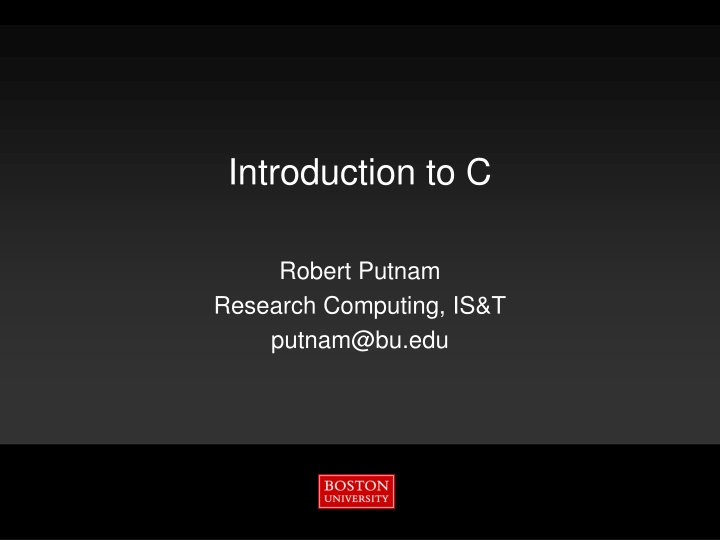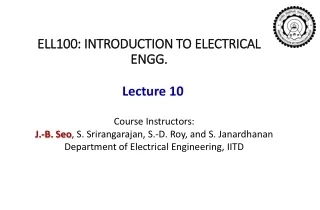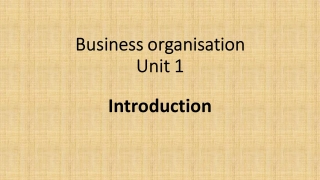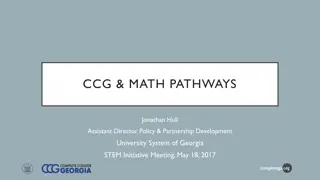Introduction to C
This content provides an overview of C programming, focusing on research computing and Information Services & Technology. It covers the history, goals, basic syntax, makefiles, and more. Learn about the development of C by Dennis Ritchie at Bell Labs, compiled vs. interpreted languages, and insights from Dennis Ritchie himself. Understand the foundations of C and its practical applications in program development.
Download Presentation

Please find below an Image/Link to download the presentation.
The content on the website is provided AS IS for your information and personal use only. It may not be sold, licensed, or shared on other websites without obtaining consent from the author.If you encounter any issues during the download, it is possible that the publisher has removed the file from their server.
You are allowed to download the files provided on this website for personal or commercial use, subject to the condition that they are used lawfully. All files are the property of their respective owners.
The content on the website is provided AS IS for your information and personal use only. It may not be sold, licensed, or shared on other websites without obtaining consent from the author.
E N D
Presentation Transcript
Introduction to C Robert Putnam Research Computing, IS&T putnam@bu.edu
Information Services & Technology 2/16/2025 Outline Goals History Basic syntax Makefiles Additional syntax
Information Services & Technology 2/16/2025 Goals To write simple C programs To understand and modify existing C code To write and use makefiles 3
Information Services & Technology 2/16/2025 C History Developed by Dennis Ritchie at Bell Labs in 1969-73 Ancestors: BCPL -> B -> NB Impetus was porting of Unix to a DEC PDP-11 PDP-11 had 24kB main memory! See http://cm.bell-labs.com/cm/cs/who/dmr/chist.html See The C Programming Language by Kernighan & Ritchie (2nded.) (aka K & R ) Official ANSI standard published in 1989 ( C89 ) Updated in 1999 ( C99 ) C++ (1985) Author: Bjarne Stroustrup (Bell Labs), 1979, C with classes 4
Information Services & Technology 2/16/2025 A word from Dennis Ritchie Despite some aspects mysterious to the beginner and occasionally even to the adept, C remains a simple and small language, translatable with simple and small compilers. Its types and operations are well-grounded in those provided by real machines, and for people used to how computers work, learning the idioms for generating time- and space-efficient programs is not difficult. 5
Information Services & Technology 2/16/2025 Compiled vs. Interpreted Languages Interpreted languages when you type something, e.g., x=y+z , it is immediately converted to machine language and executed examples: MATLAB, Python, R advantage interactive, allows fast development disadvantage generally uses more CPU/memory/time for given task 6
Information Services & Technology 2/16/2025 Compiled (cont d) Compiled languages examples: C, C++, Fortran source code is written using a text editor source code does nothing by itself it s just text source code must be processed through a compiler, which checks for correct syntax and semantics translates source code into assembly, then assembles (or calls assembler) to produce machine code passes machine code to linker, which creates executable this is the file that you actually run example: .exe file in Windows default name in Unix/Linux: a.out 7
Information Services & Technology 2/16/2025 C syntax C is case-sensitive Spaces, linefeeds, etc., don t matter except within character strings. Source lines generally end with semicolons Comments notes for humans that are ignored by the compiler C: enclosed by /* */ C++: // at beginning of comment many C compilers also accept this syntax Official advice: use them liberally (so you can still understand your program next year [or next week, depending on your age]) 8
Information Services & Technology 2/16/2025 Declarations Variables and functions are declared to have a certain type. Common types include: int integer number with no decimal places: -56, 857436 float, double floating-point number with decimal: 1.234, 4.0, 7. float: single precision, 32 bits*, ~7 significant digits double: double precision, 64 bits*, ~16 significant digits complex, double complex (since C99) 9 *on most computers
Information Services & Technology 2/16/2025 Declarations (cont d) char character enclosed in single quotes x , $ character string is string of chars enclosed in double quotes This is a character string. 10
Information Services & Technology 2/16/2025 Functions Source code largely consists of functions each one performs some task you write some of them some are supplied, typically in libraries Every code contains at least one function, called main Functions often, though not always, return a value, e.g.: int, float, char, etc. default return value is int To be explicit about returning no value, declare as void 11
Information Services & Technology 2/16/2025 Functions (cont d) Functions may, but do not have to, take arguments arguments are inputs to the function e.g., y = sin(x) Code blocks, including entire functions, are enclosed within curly brackets { } main function is defined in source code as follows: type declaration function name (we have no arguments here but still need parentheses) function arguments int main( ) { function statements } 12 Note: main is of type int because it returns an integer to the operating system. With the bash shell in Linux, view this value via echo $? .
Information Services & Technology 2/16/2025 Functions (3) Style note: some people like to arrange the brackets like so: int main( ) { function statements } Either way is fine Friendly advice: be consistent! Emacs advertisement: a good editor can do automatic indentation, help you find matching brackets, etc. 13
Information Services & Technology 2/16/2025 How to say hello, world : printf printf is a function, part of C s standard input/output library,that is used to direct output to the screen, e.g., printf( my string ); The above syntax does not include a line feed. We can add one with: printf( my string\n ); where \n is a special character sequence representing LF 14
Information Services & Technology 2/16/2025 printf and stdio.h Some program elements, such as library functions like printf, are declared in header files, aka include files. Syntax*: #include <stdio.h> or #include stdio.h The contents of the named file are presented to the compiler as if you had placed them directly in your source file. In the case of printf, stdio.h informs the compiler about the arguments it takes, so the compiler can raise a warning or error if printf is called incorrectly. More will be said about this later. 15 *Note that the #include statement does not end with ;
Information Services & Technology 2/16/2025 Exercise 1 Write a hello world program in an editor Program should print a character string General structure of code, in order: include the file stdio.h define main function use printf to print string to screen Save it to the file name hello.c 16
Information Services & Technology 2/16/2025 Compilation A compiler is a program that reads source code and converts it to a form usable by the computer/CPU, i.e., machine code. Code compiled for a given type of processor will not generally run on other types AMD and Intel are compatible We ll use gcc, since it s free and readily available 17
Information Services & Technology 2/16/2025 Compilation (cont d) Compilers have numerous options See gcc compiler documentation at http://gcc.gnu.org/onlinedocs/ gcc is part of the GNU compiler collection, which also includes a C++ compiler (g++), Fortran compiler (gfortran), etc. For now, we will simply use the o option, which allows you to specify the name of the resulting executable 18
Information Services & Technology 2/16/2025 Compilation (3) In a Unix window: gcc hello.c o hello hello.c is source file name (compiler input) hello is name of executable file (compiler output) Compile your code If it simply returns a Unix prompt it worked If you get error messages, read them carefully and see if you can fix the source code and re-compile 19
Information Services & Technology 2/16/2025 Compilation (4) Once it compiles correctly, type the name of the executable hello at the Unix prompt, and it will run the program should print the string to the screen 20
Information Services & Technology 2/16/2025 Variable Declarations Different variable types have different internal representations, so CPUs use different machine instructions for int, float, etc. Must tell compiler the types of variables by declaring them prior to use example declarations: int i, jmax, k_value; float xval, elapsed_time; char aletter, bletter; 21
Information Services & Technology 2/16/2025 Arithmetic +, -, *, / No power operator (see next bullet) Math functions declared in math.h pow(x,y) raises x to the y power sin, acos, tanh, exp, sqrt, etc. for some compilers, need to add lm flag (that s a small el) to compile command to access math library complex functions declared in complex.h Exponential notation indicated by letter e e.g., is expressed as 4.2e3 10 2 . 4 3 22
Information Services & Technology 2/16/2025 Arithmetic (cont d) Computer math The equals sign is used for assignment: Value of variable on left is replaced by value of expression on right Many legal statements are algebraically nonsensical, e.g., i = i + 1; 23
Information Services & Technology 2/16/2025 Arithmetic (3) ++ and -- operators These are equivalent: i = i+1; i++; Available as prefix or postfix operator j = i++; // assign value of i to j, then increment i j = ++i; // increment i, then assign value to j += assignment These are equivalent: x = x + 46.3*y; x += 46.3*y; 24
Information Services & Technology 2/16/2025 Arithmetic (4) Pure integer arithmetic truncates result! 5/2 = 2 2/5 = 0 Can convert types with cast operator float xval; int i, j; xval = (float) i / (float) j; 25
Information Services & Technology 2/16/2025 A Little More About printf To print a value (as opposed to a literal string), must specify a format For now we will use %f for a float and %d for an int For floats, to specify 2 digits to the right of the decimal point, use %.2f Here s an example of the syntax: printf( My integer value is %d and my float value is %f \n , ival, fval); The values listed at the end of the printf statement will be embedded at the locations of their respective formats. 26
Information Services & Technology 2/16/2025 Exercise 2 Write program to convert Celcius temperature to Fahrenheit and print the result. Hard-wire the Celcius value to 100.0 We ll make it an input value in a subsequent exercise Don t forget to declare all variables Here s the equation, which you will need to modify appropriately [hint, hint!] for your program: F = (9/5)C + 32 27
Information Services & Technology 2/16/2025 scanf reads from keyboard 2 arguments character string describing format, e.g., %d for integer %f for float address* of variable into which to put keyboard input example int ival; scanf("%d", &ival); 28 *see next slide
Information Services & Technology 2/16/2025 Address-of Operator Every variable has an address in which it is stored in memory In C, we sometimes need to use the address of a variable rather than its value Will go into more detail when we discuss pointers Address-of operator & returns address of specified variable &ival gives the address of the variable ival rarely need to know actual value of address, just need to use it 29
Information Services & Technology 2/16/2025 Exercise 3 Modify Celcius program to read value from keyboard Prompt for Celcius value using printf Read value using scanf Rest of program can remain the same as last exercise 30
Information Services & Technology 2/16/2025 Arrays Declare arrays using [ ] float x[100]; char a[25]; Array indices start at zero Declaration of x above creates locations for x[0] through x[99] Multi-dimensional arrays are declared as follows: int a[10][20]; 31
Information Services & Technology 2/16/2025 Character arrays Can t directly assign character array values: char w[100]; w = hello ; Need to use strcpy function declared in string.h strcpy(w, hello ); This is wrong! 32
Information Services & Technology 2/16/2025 Character arrays (cont d) Character strings (char arrays) always end with the null character (\0) You usually don t have to worry about it as long as you dimension the string 1 larger than its maximum possible length char name[5]; strcpy(name, Fred ); works char name[4]; strcpy(name, Fred ); bug: might or might not work, (depending on what follows name in memory might corrupt other variables) 33
Information Services & Technology 2/16/2025 For Loop for loop repeats calculation over range of indices for(i=0; i<n; i++) { a[i] = sqrt( pow(b[i],2) + pow(c[i],2) ); } for has 3 control statements separated by semicolons: initialization completion condition (i.e., if true, keep looping) what to do after each iteration The body of the for loop follows the control section and is enclosed by curly brackets. 34
Information Services & Technology 2/16/2025 while while is a simpler alternative to for: int i = 0; while (i < n) { a[i] = sqrt( pow(b[i],2) + pow(c[i],2) ); i++; } 35
Information Services & Technology 2/16/2025 do do is like while, but executes the loop before testing the condition: int i = 0; do { a[i] = sqrt( pow(b[i],2) + pow(c[i],2) ); i++; } while (i < n); Note that after the first iteration, the logic of do is identical to while. 36
Information Services & Technology 2/16/2025 break break immediately exits the enclosing loop: int i = 0; while (1) { a[i] = sqrt( pow(b[i],2) + pow(c[i],2) ); i++; if (i >= n) break; } 37
Information Services & Technology 2/16/2025 continue continue immediately jumps to the top of the enclosing loop: for (i=0;i<maxindex;i++) { if (a[i] == b[i]) continue; printf( Mismatch of a and b at index %d\n ,i); break; } 38
Information Services & Technology 2/16/2025 Exercise 4 Write program to: declare two float vectors of length 3 integer loop variable float result variable prompt for first vector, then read values using for loop prompt for second vector, then read values using for loop calculate dot product using for loop print the result Possible to use redirection of standard input to avoid retyping each time: % echo 1 2 3 4 5 6 | dotprod 3 = c a b i i = 1 i 39
Information Services & Technology 2/16/2025 Pointers When you declare a variable, a location of appropriate size is reserved in memory When you set its value, the value is placed in that memory location float x; x = 3.2; 12 8 3.2 4 0 address 40
Information Services & Technology 2/16/2025 Pointers (cont d) A pointer is a variable containing a memory address Declared using * float *p; Often used in conjunction with address-of operator & float x, *p; p = &x; 41
Information Services & Technology 2/16/2025 Pointers (3) float x, *p; p = &x; 1064 12 p x 1056 8 8 1048 4 1040 0 address address 42
Information Services & Technology 2/16/2025 Pointers (4) Depending on context, * can also be the dereferencing operator Value stored in memory location pointed to by specified pointer *p = 3.2; // the place pointed to by p gets 3.2 Common newbie error double *p; *p = 3.2; Wrong! p contains an unknown address float x, *p; p = &x; *p = 3.2; correct Pop quiz: what is the value of x after this code runs?
Information Services & Technology 2/16/2025 Pointers (5) The name of an array is actually a pointer to the memory location of the first element a[100] a is a pointer to the first element of the array These are equivalent: x[0] = 4.53; *x = 4.53; 44
Information Services & Technology 2/16/2025 Pointers (6) If p is a pointer and n is an integer, the syntax p+n means to advance the pointer by n locations* These are therefore equivalent: x[4] = 4.53; *(x+4) = 4.53; *i.e., for most machines, 4*n bytes for a float, and 8*n bytes for a double 45
Information Services & Technology 2/16/2025 Pointers (7) In multi-dimensional arrays, values are stored in memory with last index varying most rapidly:* (a[0][0], a[0][1], a[0][2], ) Opposite of MATLAB, Fortran, R, et al. The two statements in each box are equivalent for an array declared as int a[5][5]: a[0][3] = 7; a[1][0] = 7; *(a+3) = 7; *(a+5) = 7; 46 * referred to as row-major order
Information Services & Technology 2/16/2025 sizeof Some functions require size of something in bytes A useful function sizeof(arg) The argument arg can be a variable, an array name, a type Returns no. bytes in arg float x, y[5]; sizeof(x) ( 4) sizeof(y) (20) sizeof(float) ( 4) 47
Information Services & Technology 2/16/2025 Dynamic Allocation Suppose you need an array, but you don t know how big it needs to be until run time. Tried and true method - use malloc function: malloc(n) n is no. bytes to be allocated returns pointer to allocated space declared in stdlib.h Many C compilers now accept float f[n] , where n is determined at runtime. 48
Information Services & Technology 2/16/2025 Dynamic Allocation (cont d) Declare pointer of required type float *myarray; Suppose we need 101 elements in array: myarray = malloc(101*sizeof(float)); free releases space when it s no longer needed: free(myarray); 49
Information Services & Technology 2/16/2025 Exercise 5 Modify dot-product program to handle vectors of any length Prompt for length of vectors (printf) Read length of vectors from screen (scanf) Dynamically allocate vectors (malloc) Prompt for and read vectors (printf, scanf) use for loop Don t forget to include stdlib.h, which contains a declaration for the malloc function Note that the vectors will be declared as pointers, not fixed-length arrays 50










